A Sincere Conversation With A Yoga Pioneer
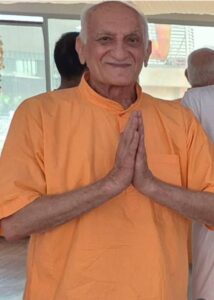
Little by little, the drunkards gather
Little by little, the worshippers arrive
Their origin is kindness and the return of kindness
Both beauty and beauty reach the garden
Part 1:
Yoga, as one of the oldest spiritual and cultural traditions, is a path to achieving peace, self-knowledge and inner balance. Today, we are honored to be in the presence of one of the prominent yoga pioneers; a teacher who has dedicated years of his valuable experience and efforts to this path.
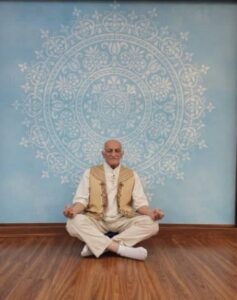
Q1: Please introduce yourself?
A1: Greetings and good times, dear ones. I am Manouchehr Alborzi, a 50-year-old expert in water and groundwater drilling, teaching at 2 universities and author of books on water and wastewater, and retired from the Ministry of Housing. Currently, I am engaged in practicing yoga and tai chi, as well as holding seminars entitled Health in the Third Millennium, which have been held in Tehran and Kish so far.
Q2: Please tell me how you were introduced to yoga. Who or what was your first teacher or source of inspiration in yoga?
A2: I was introduced to yoga when I was 17. I happened to see photos of a person doing strange movements behind the windows of the Nasr Theater in Lalehzar with my friends. We went to watch the movements of this Indian yogi. After the show, I got his autograph. His name was Yogi Dharmandur. He touched my forehead and told me that one day you will become a yogi. Years passed until 1978, when I had been practicing karate for many years, I thought that karate could not be continued for the rest of my life due to the complications caused by this sport. I remembered that yoga exists and that yoga can be practiced.

Q3: How many years have you been practicing yoga and what changes have you experienced during this time?
A3: From 1983 to 1987, Dr. Swami Pratappad was in Iran. I worked with him. During these 4 years, I also worked with Master Khosrow Sharif, Master Mohandeh Moradi, and Dr. Alavi Moghadam. Every year, the book of Bhagavad Gita was interpreted by these 3 masters. Master Jamshid came from Germany every year and taught Tantra Yoga. After that, I worked with Master Mahdavi Pour, Master Mousavi Nasab, and Master Roohbakhsh. This series of trainings created a fundamental transformation in me, not a partial or superficial transformation. In the way that yoga became my way of life and meditation became my main duty in life. For more than 40 years, I have always taught yoga and been a student, and I have tried to learn new things from other masters.
Q4: What encouraged you to continue practicing yoga at the beginning of your journey?
A4: In my opinion, yoga itself chooses those it should choose and I was chosen by yoga. When I listened to the commentary of Bhagavad Gita 3 times and in these 18 chapters I heard Krishna’s words about a true yogi and I followed a high percentage of Krishna’s advice and changed my lifestyle and diet and became more serious and tried to become rooted in yoga like a tree.
Q5: What impact has yoga had on your personal, spiritual and physical life?
A5: A profound and profound impact. In a way, I have always maintained my personal space in life, my own room, my own meditation, my own studies, my own books, and the translation of the books I have published, the translation of the book Yoga Temple of the Body and Yoga of the Mind and Body, and …. In any case, yoga has had a fundamental impact on my life, both physically and spiritually. I do not take medication, I have not been sick, I have not been vaccinated against the coronavirus, I have not contracted the coronavirus, and there has not been a day that I have not done yoga and tai chi. I have kept my body healthy and in balance, and I am satisfied with my circumstances.
Q6: What do you think are the most important principles of yoga?
A6: When yoga starts with Yama and Niyama, it itself tells us that the most important principle of ethics is that Yama and Niyama should be observed, and then we experience Asana, Pranayama, and Raja Yoga. The principles of yoga are these 8 stages of Ashtanga Yoga, which the sage Patanjali also emphasizes.
Q7: Do you practice a particular style of yoga? If so, why did you choose that style?
A7: The style that I have taught is Sivananda or Ashtanga Yoga, which are almost the basis of other styles. Today, there are many styles in the world, but there are 10 or 15 main styles, and other styles are a matter of taste.
Q8: In your opinion, what is the main difference between yoga and other sports?
A8: Yoga is a lifestyle. Yoga has Jnana Yoga and deep knowledge. Hundreds of other sports that currently exist do not reach the level of yoga and cannot be compared. Yoga, with its philosophy, history, and ancient credibility, is not comparable to other sports at all. Yoga is a special style that can be the best for self-knowledge, and yoga has a hidden aspect of its path and practice for those who want to follow its spiritual path and experience yoga from a spiritual perspective. But those who are familiar with the philosophy of yoga and Jnana and Gyan Yoga. They are not like everywhere else in the world, only the movements or asanas attract their attention and they only do the asanas and you cannot immediately realize what ocean they have stepped into and it should be time for them to pay attention and want to really experience yoga.
Q9: Do you have a special or impressive memory from your yoga practice or teaching that you would like to share with us?
A9: My memories are when I was 17 years old when I met Yogi Dharmendura and when I was 23 I found his book Yoga Aramesh on the side of the street and I used to do his movements at home. And my other memory is that we were a group in Iran before yoga was recognized in Iran and we celebrated the anniversary of yoga every year until 1999 when the Yoga Association was established and we held the first level 3 coaching course and held 18 competitions, all of which are memories for me.
Q10: When did you start teaching yoga and what led you to teaching?
A 10: When someone learns yoga, it becomes their duty to teach others and to increase their experiences while teaching. I started teaching yoga in 1983, and the energy of yoga itself led me to teach.
Interviewer: shahin valadi
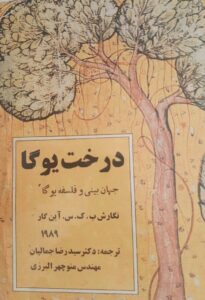
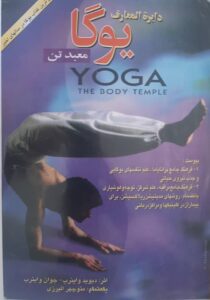
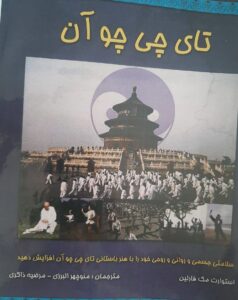
:گفتگویی صمیمانه با پیشکسوت یوگا
منوچهر البرزی
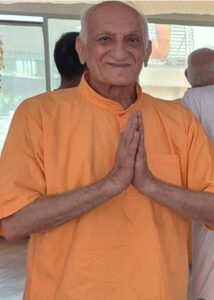
اندک اندک جمع مستان می رسند
اندک اندک می پرستان می رسند
اصلشان لطفست و هم واگشت لطف
هم زبستان سوی بستان می رسند
:بخش اول
یوگا، به عنوان یکی از کهنترین سنتهای معنوی و فرهنگی، مسیری برای رسیدن به آرامش، خودشناسی و تعادل درونی است. امروز افتخار داریم در .محضر یکی از پیشکسوتان برجسته یوگا باشیم؛ استادی که سالها تجربه و تلاشهای ارزشمند خود را وقف این راه کردهاند.

س ۱: لطفا خودتان را معرفی بفرمایید؟
ج ۱: درود و وقت به خیر عزیزان. منوچهر البرزی هستم. کارشناس ۵۰ساله آب و حفاری آب های زیرزمینی و مدرس این رشته در دو دانشگاه و تالیفاتی در زمینه آب و فاضلاب و بازنشسته وزارت مسکن. و در حال حاضر مشغول به انجام یوگا و تایچی و همچنین برگزاری سمینارهایی تحت عنوان سلامتی در .هزاره سوم که تاکنون در تهران و کیش برگزار شده، هستم.
س ۲: لطفا بفرمایید چگونه با یوگا آشنا شدید و نخستین استاد یا منبع الهام شما در یوگا چه کسی یا چه چیزی بوده؟
ج ۲: آشنایی من با یوگا از ۱۷ سالگی بود. یک روز تصادفا با دوستانم پشت ویترین های تئاتر نصر در لاله زار، عکس های فردی را دیدم که حرکات عجیبی را انجام می داد. بعد از آن به همراه دوستام برای تماشای حرکات این یوگی هندی رفتم و بعد از اتمام نمایش از او امضا گرفتم. به اسم یوگی درمندور … ایشان دستی به پیشانی من کشید و به من گفت که تو روزی یک یوگی خواهی شد. سال ها گذشت تا سال ۵۷… من که سال ها کاراته کار کرده بودم به این فکر .افتادم که کاراته را نمی شود به خاطر عوارض ناشی از این ورزش تا پایان عمر ادامه داد. به این فکر افتادم که یوگا هست و می توان یوگا را تجربه کرد.

س ۳: چند سال است که یوگا کار می کنید و در این مدت چه تحولاتی را تجربه کرده اید؟
ج ۳: از سال ۱۳۶۲تا ۱۳۶۶ که دکترسوامی براپوپاد در ایران بودند با ایشان کار کردم و همچنین در این چهار سال با استاد خسرو شریف و استاد مهندس مرادی و دکتر علوی مقدم نیز کارکردم. هرسال کتاب بها گاواد گیتا توسط این سه استاد تفسیر می شد و استاد جمشید هر سال از آلمان می آمدند و تانترا یوگا درس می دادند. بعد از آن با استاد مهدوی پور و استاد موسوی نسب و استاد روحبخش نیز کار کردم. مجموعه این آموزش ها، تحولی بنیادین در من بوجود آورد نه تحول مقطعی و سطحی. بطوریکه یوگا راه زندگی من و مراقبه وظیفه اصلی من در زندگی شد . در طول بیش از ۴۰ سال همیشه هم یوگا درس داده ام .و هم شاگرد بوده ام و همچنین سعی کرده ام مطالب جدید ازاستادان دیگر نیز یاد بگیرم.
س ۴: در ابتدای مسیر چه چیزی شما را به ادامه تمرین یوگا ترغیب کرد؟
ج ۴: به نظر من یوگا خودش انتخاب می کند، کسانی را که باید انتخاب کند و من انتخاب شده یوگا بودم. وقتی که سه مرتبه تفسیر بهاگاواد گیتا را گوش کردم، در این ۱۸ فصل گفته های کریشنا را در مورد یک یوگی واقعی شنیدم و درصد بالایی از توصیه های کریشنا را رعایت کردم و سبک زندگی و تغذیه ام را .نیز تغییر دادم. در این مسیر جدی تر شده و سعی کردم که مثل یک درخت در یوگا ریشه دار بشوم.
س ۵: یوگا چه تاثیری بر زندگی شخصی، روحی و جسمی شما داشته است؟
ج ۵: تاثیری ژرف و عمیق…به طوری که همیشه فضای شخصی خودم را در زندگی حفظ کرده ام… اتاق خودم، مراقبه خودم، مطالعات خودم و کتاب های خودم و ترجمه کتاب هایی که منتشر کرده ام. مانند ترجمه کتاب یوگا معبد تن و یوگا ذهن و بدن و به هر جهت یوگا تاثیر اساسی بر زندگی من داشته است هم از نظر جسمی و هم از نظر روحی، هیچگاه مریض نشده ام و دارو استفاده نمی کنم. واکسن کرونا نزدم و کرونا نگرفتم و هیچ روزی نبوده که یوگا و تایچی .انجام ندهم. بدن خودم را سالم و در تعادل نگاه داشته ام و از شرایط خودم راضی هستم.
س ۶: به نظر شما مهمترین اصول یوگا چیست؟
ج ۶: وقتی که یوگا از یاما و نیاما شروع می شود خودش با ما حرف می زند که مهمترین اصل، اخلاقیات است که در یاما و نیاما باید رعایت شود و بعد از آن .آسانا، پرانایاما و راجا یوگا را تجربه می کنیم. اصول یوگا همین هشت مرحله آشتانگا یوگا است که حکیم پاتانجلی بر آن بسیار تاکید دارد.
س ۷: آیا سبک خاصی از یوگا را تمرین می کنید ؟ و چرا آن سبک را انتخاب کرده اید؟
ج ۷: سبکی هایی که آموزش داده ام شیواناندا و آشتانگا یوگا است که تقریبا پایه سبک های دیگر هستند. امروزه سبک های زیادی در دنیا وجود دارد. ولی .سبک های اصلی حدود ۱۰ تا ۱۵ هستند و سبک های دیگر کاملا سلیقه ایی هستند.
س ۸: به نظر شما تفاوت اصلی یوگا با ورزش های دیگر چیست؟
ج ۸: یوگا سبک زندگی است. ما در یوگا جنانا یوگا را داریم که حاوی دانش عمیقی است. در حال حاضر صدها ورزش دیگر وجود دارد که به پای یوگا نمی رسد و قابل مقایسه نیست. یوگا با داشتن فلسفه، تاریخچه و اعتبار باستانی اش اصلا قابل مقایسه با ورزش های دیگر نیست. یوگا سبک خاصی است که می تواند برای خودشناسی بهترین باشد. برای کسانی که می خواهند راه معنوی را طی کنند، یوگا یکجنبه سیر و سلوک پنهانی دارد که می توانند از دید معنوی، یوگا راتجربه کنند. ولی کسانی که با فلسفه یوگا و جنانا و گیانا یوگا آشنا نیستند، مثل همه جای دنیا فقط حرکات یا آساناها توجهشان را جلب می کند. آنها فقط به تمرین آساناها می پردازند و نمی شود یکباره آنها را متوجه کرد که در چه اقیانوسی پا گذاشته اند و برای هرکسی باید زمانش فرا برسد که بخواهد یوگا را واقعا تجربه کند.
س ۹: خاطره ایی خاص یا تاثیرگذار از دوران تمرین یا آموزش یوگا دارید که بخواهید با ما به اشتراک بگذارید؟
ج ۹:خاطراتم بازمی گردد به همان ۱۷ سالگی ام که یوگی درمندورا را دیدم و در ۲۳ سالگی کتاب یوگا آرامش را کنار خیابان پیداکردم و حرکاتش را در خانه انجام می دادم. خاطره دیگری دارم از زمانیکه یوگا هنوز در ایران به رسمیت شناخته نشده بود و ما گروهی در ایران بودیم که هر سال، سالگرد یوگا را جشن می گرفتیم. تا سال ۱۳۷۸ که انجمن یوگا در ایران تاسیس شد و توانستیم اولین دوره مربیگری درجه سه را برگزار کنیم. ما ۱۸ دوره مسابقه برگزار .کردیم که همه این سالها برای من خاطره است.
س ۱۰: آموزش یوگا را از چه زمانی آغاز کردید و چه چیزی شما را بیشتر به تدریس سوق داد؟
ج ۱۰: هر کسی که به سمت یوگا می رود و یوگا یاد می گیرد، دینی به گردنش است که باید به دیگران آموزش دهد و در حین آموزش هم تجربیاتش را افزایش .بدهد. من از همان سال ۱۳۶۲ آموزش یوگا را شروع کردم و خود انرژی یوگا مرا به سمت آموزش دادن سوق داد.
مصاحبه: شهین ولدی
